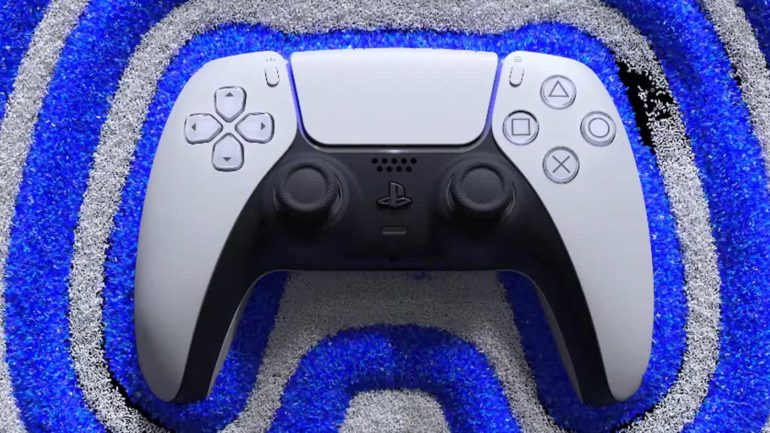Sony has revealed the first ad spot for the PS5 (which happened to leak a little earlier tonight) alongside some key ways in which developers are using the DualSense’s adaptive triggers and haptic feedback. You can read the entire blog post HERE, but we’ve highlighted some of the first-party examples below:
https://www.youtube.com/watch?v=Cj6AUuRs1A4&feature=emb_logo
SPIDER-MAN MILES MORALES
“The haptic feedback precision allows us to do all sorts of new things. In Marvel’s Spider-Man: Miles Morales, we’ll be hinting to players which direction attacks are coming from by providing haptic feedback from the appropriate direction on the DualSense wireless controller. What does it feel like to use Miles’s stealth ability? How does a Venom Blast feel? Because of the high resolution of DualSense wireless controller’s haptics system, we can really push the dimensionality of the feedback. For instance, as you hold down Square to do a Venom Punch, you feel Spider-Man’s bio-electricity crackle across from the left side of the controller, culminating in the right side on impact.”
HORIZON FORBIDDEN WEST
“Horizon Forbidden West features new weapons that are designed to feel unique and play a specific role in combat with machines and human opponents. The DualSense wireless controller adaptive triggers will help us to make the weapons feel even more unique and satisfying to use.”
DEMON’S SOULS
“With the DualSense wireless controller and the power of haptics, we can make the combat [in Demon’s Souls] feel grittier, darker, and deadlier. Now you feel every blow as you strike down your enemies and cast each spell. You’ll experience the force of a titanic boss’ attack as you pull off a well-timed guard. Metal strikes metal when your foes block your attacks or you block theirs. That extra sensory feedback through the controller allows you to know your attack hit home and your perfectly-timed parry was a success, so you can react faster and more decisively.
We can also turn the simple act of pulling a lever to open a gate into a sensory experience. This is something that rumble could never do. It could never replicate the feeling of metal striking metal or fire crackling in your hand as you conjure magic. Haptics [are] integral to the experience, to immersing the player in the world and adding to the gameplay. The visual, aural, and tactile working together takes this new generation of gaming into the future.”
RATCHET AND CLANK: A RIFT APART
“The adaptive triggers are something we’re excited to feature [in Ratchet & Clank: Rift Apart]! For instance, the Enforcer is a dual-barreled shotgun type weapon. As you pull the trigger, you’ll fire from one barrel, and you can feel resistance around halfway down the trigger. Need a bigger blast? Pull the trigger through that resistance point and you’ll fire both barrels at the same time”
GRAN TURISMO 7
“I think the most effective use of the adaptive trigger [in Gran Turismo 7] is for representing the operation of the antilock brake system (ABS) while braking. A typical ABS releases brake pressure intermittently while the driver applies pressure to the pedal. The adaptive trigger is suited for recreating this pedal feel, and it will allow the player to accurately feel and understand the relationship between the braking force they want and the tire’s grip.
Compared to the rumble force feedback we had in the past, the special character of the haptic feedback is that it has a bigger range of frequencies it can produce.”
SACKBOY: A BIG ADVENTURE
“Adaptive triggers have enabled us to provide sensations which match what Sackboy would feel in game. For example, when picking objects up, there is a tension to each press which conveys that the little guy is struggling to carry it. Similarly, when equipped with the grappling hook, R2’s ‘Weapon Mode’ makes the player feel like they’re actually firing it themselves.”
GHOSTWIRE TOKYO:
“Just as the name “trigger” suggests, the main use of the DualSense wireless controller’s adaptive triggers in Ghostwire: Tokyo is for “active” actions—to shoot or trigger something—and we also use them to create the sensation of recoil. We’re also looking at ways to take advantage of the adaptive triggers to express a sense of persistent energy, or a balance of forces if you will, and for perhaps actions such charging, loading, and a sense of accumulation of power or energy for things.The haptic feedback, in comparison to the vibration function of previous generations, allows us to utilize a much wider range, starting from a very strong vibration that is much more powerful than before, down to extremely light vibration. This way we can offer players very detailed, “textured” nuances. Because of this, our approach is different – it isn’t a transient or a constant vibration level anymore, it allows us to meticulously adjust the feedback throughout the game.”



